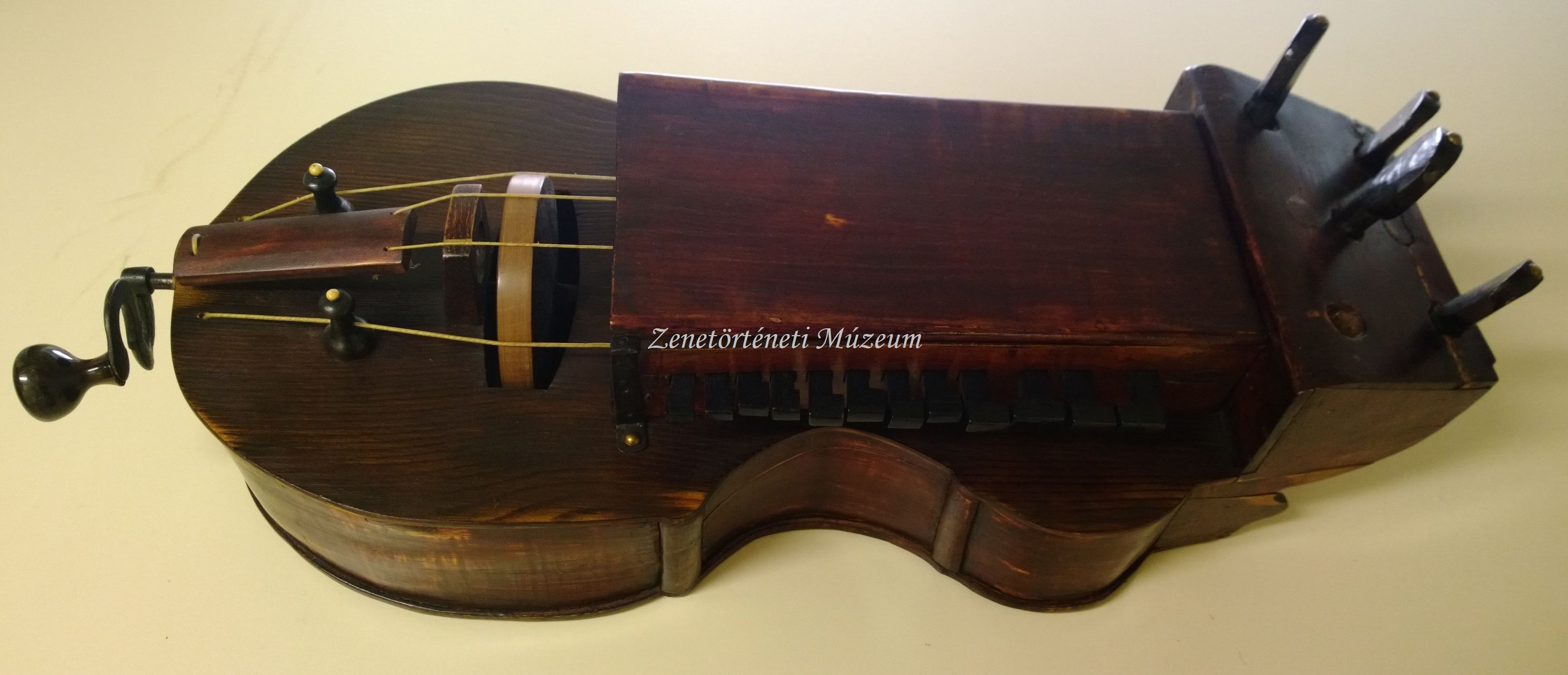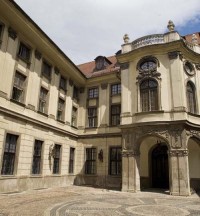Diatonic hurdy-gurdy with 5 keys.
The first recorded evidence of the presence of hurdy-gurdies in Hungary is on a coat of arms granted to a noble family in Debrecen in 1677 which shows a “Lyra” hanging from a tree. The instrument shows the influence of the hurdy-gurdies of Polish, Russian and Ukrainian ethnic nobility. The prevalence of the instrument is attested by a 1740 engraving by Martin Engelbrecht entitled “La cantinière”, nevertheless it does not prove the continual presence of hurdy-gurdies during the 17th and18th centuries. It is more probable that hurdy-gurdies became popular again during the 18th and 19th centuries, but now as a western adoption and even this trend could have had various stages in time and geographical area.
en

